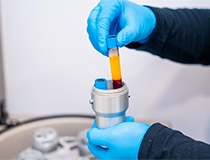For active individuals and aging adults alike, joint pain can be frustrating, limiting, and difficult to treat. While traditional options like physical therapy or surgery can be effective, many patients are now turning to orthobiologics for a more natural way to heal. Let’s explore how orthobiologics can support joint recovery and pain relief.
Harnessing Nature to Heal: The Role of Orthobiologics
Orthobiologics are natural substances derived from your own body—or similar biologically sourced materials—used to accelerate the healing of bones, muscles, tendons, and joints. These treatments work by enhancing the body’s innate repair mechanisms, making them a promising option for conditions like labral tears, tendinitis, bursitis, and early arthritis.
Orthobiologic therapies are typically injected directly into the affected area and are often performed under ultrasound or fluoroscopic guidance for precision.
Common Types of Orthobiologic Treatments
Several types of orthobiologic therapies are used in orthopedic care. The most common include:
- Platelet-Rich Plasma (PRP): This involves drawing a small amount of your blood, concentrating the platelets, and injecting them into the painful hip area. Platelets release growth factors that reduce inflammation and promote healing.
- Cell Therapy: This treatment uses specialized cells derived from your own body to support healing and tissue regeneration. The collected cells are processed and injected into the painful area to help reduce pain and promote repair.
- BMAC (Bone Marrow Aspirate Concentrate): This is a form of cell therapy where bone marrow is drawn from your pelvis and processed to concentrate regenerative cells and growth factors. The resulting solution is injected into the affected joint to assist with tissue healing and inflammation control.
How Orthobiologics Help Joint Pain
Orthobiologics don’t just mask pain—they address the underlying inflammation and tissue damage contributing to discomfort. For example, in conditions like joint osteoarthritis or labral degeneration, PRP or cell therapy can reduce joint inflammation and improve mobility without surgery or long-term medication use.
They are especially appealing to active patients who want to avoid downtime or to older adults who may not be ideal candidates for surgery.
While orthobiologic therapies show promise, they’re not a one-size-fits-all solution. Factors like the severity of your joint’s condition, overall health, and treatment goals all play a role. These treatments are often best for patients with mild to moderate joint damage or those seeking to delay more invasive interventions like total joint replacements.
At the American Hip Institute and Orthopedic Specialists, we provide cutting-edge options to support joint health and healing.
AUTHOR: Etan Sugarman, MD, is a board-certified, fellowship-trained orthopedic surgeon specializing in sports medicine and hip arthroscopy. He is the Director of Joint Preservation at the American Hip Institute. Dr. Sugarman has taught and published extensively in hip preservation and minimally invasive surgical techniques.
AUTHOR: Mark F. Schinsky, MD, is a board-certified, fellowship-trained orthopedic surgeon specializing in adult reconstructive surgery, with a focus on hip and knee replacement. He has extensive expertise in minimally invasive techniques, complex primary procedures, and revision total joint replacements, using the latest surgical technologies and biologics to improve outcomes and recovery.


 Thanks a lot for getting my hip right. Looking forward to a full recovery and a great season. Thanks again for everything.
Thanks a lot for getting my hip right. Looking forward to a full recovery and a great season. Thanks again for everything.










